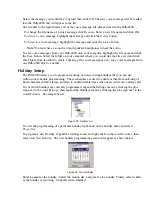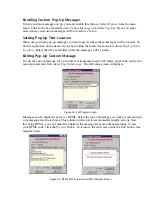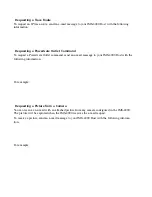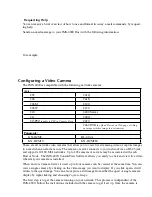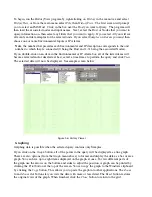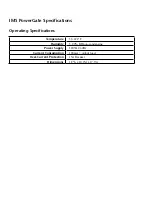
Printing Data
You can print the data viewed in the grid by clicking the
button. Printing defaults to an Arial
5 pt. font in order to fit one line of data across one line of an 8.5" x 11" sheet of paper printed in
landscape mode. You may choose different fonts and type sizes.
Exporting Data
The
Export
button allows you to save the queried data in the grid to a file format which can be
easily imported into other applications. Options include the ability to save the file in CSV format,
formatted text (prn), and tab delimited (txt) format. Note: The exported data will represent
only
what you’ve selected to query.
Click on
File
and select
Export Field Names
from the submenu if you want the field titles (Date,
Time, Event Code, etc.) to be included with the data when you export.
Copying to the Clipboard
You can highlight and copy selected cells within the grid to the Windows clipboard. To highlight
the data simply click-and-hold the left mouse button and drag the mouse over the cells you wish
to highlight, then either right-click and select Copy, or click
Edit
from the main menu and select
Copy
. To select all of the data in the grid, right-click within the grid and choose
Select All
from the
contextual menu, or click
Edit
from the main menu and choose
Select All
from the submenu. This
will highlight all of the data in the grid. You can then perform the Copy function as previously
described.
Deleting Data
The
Delete
button will remove the queried data displayed in the grid from the database.
TheViewer Menu offers you other features as well to customize your report.
Archiving
As the history database grows it will begin to take longer to perform a query. It is recommended
that the database be periodically archived to keep the size reasonable and to permit satisfactory
performance of the HistoryView program. Archiving may be done as often as necessary for perfor-
mance reasons but it
must
be done when the database reaches its physical limit. To find out how big
the database is for a particular unit, select
Database Statistics
under the
Archive
menu. The size of
the database and percent full will appear in the status bar along the bottom of the grid. A warning
message will appear when the database reaches 80% of its capacity.
To archive the history database select
Archive
from the main menu and then choose
Select database
to archive
. Locate the history.db file for the unit you wish to archive and click
Open
. Next, enter
the date range to archive (typically one or more months or a quarter). Click the
Archive
button. The
archived data will be stored in a file that includes the “from” and “to” date range in a yr/mn/dy for-
mat.
After archiving it’s recommended that you Pack the history database (history.db) to delete the old
data and reduce the file size. To do this select
Pack Database
from the
Archive
menu. Note that the
Pack Database
function can only be executed while offline with the IMS unit. To run
HistoryView
while not connected, click
File
, then
Run
from the
ConsoleView
main menu.
To view archived data, you will need to restore an archived database. To do this, choose
Select
archive to restore
from the
Archive
menu. Next, choose the archive file you wish to restore and
click
Open
. Next, click the
Restore
button. The archived data will be copied into the history data-
base and a query can be performed.
Chapter 2: Software
83
Summary of Contents for Sensaphone IMS-4000
Page 1: ...IMS 4000 User s Manual Version 2 4 8 PHONETICS INC SENSAPHONE ...
Page 44: ......
Page 59: ......
Page 60: ......
Page 102: ......
Page 106: ...IMS 4000 Manual 106 ...
Page 135: ...Chapter 7 IMS 4000 Sensors 135 ...
Page 146: ...IMS 4000 Manual 146 ...
Page 148: ...IMS 4000 Manual 148 ...
Page 158: ...IMS 4000 Manual 158 ...
Page 159: ...159 ...

